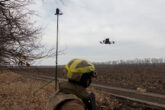February 13, 2018
Don’t Retire Our Stealth Bombers
It’s more cost-effective and smarter strategically to maintain them.
When a local community government has trouble getting its books to balance or it simply desires additional tax revenue to expand local government, but it does not have support from the community, it will often pursue a “firehouses and police stations” strategy. Rather than identify low-end nonessential services or perhaps cut back on its internal bureaucracy, local government officials will select highly visible “sacred cows” — essential services such as firehouses and local police precincts — as the targets for cuts. With this sleight of hand, bureaucrats aim to balance the budget or free up funds for new pet projects, because they know that the public will never accept such cuts. It is a common tactic that is easily recognized by political analysts.
Well, it’s clear that the United States Air Force has recently decided to put some “firehouses,” in the form of highly capable B-2 stealth bombers, on the line in order to win additional funding from the Congress as the Air Force moves into production of its new B-21 Raider bomber.
This week, as part of the president’s budget rollout, the Air Force will be issuing its new “Bomber Vector” roadmap, which will detail the acquisition and retirement plan for our 21st-century bomber force. The roadmap will include the production schedule for the 100 new B-21 Raiders, as well as the retirement plan for older bombers such as the 1980s-era B-1B bombers.
Read the full op-ed in National Review.
More from CNAS
-
Defense / Transatlantic Security
When Defense Becomes Destruction: Austria-Hungary’s Mistake and Ukraine’s RiskThis article was originally posted on War on the Rocks. The southeastern Polish city of Przemyśl, with its elegant 19th century Habsburg-era train station, remains one of the ...
By Franz-Stefan Gady
-
Defense / Transatlantic Security
Ukraine’s Catch-22 MomentThis article was originally published in the Financial Times. In Joseph Heller’s wartime classic, Catch-22, the protagonist Yossarian seeks out the US army surgeon Doc Daneeka...
By Franz-Stefan Gady
-
CNAS Insights | Budgetary Own Goals Undermine “Speed and Volume”
On November 7, Secretary of Defense Pete Hegseth laid out a plan to overhaul the Department of Defense’s (DOD’s) acquisition system. Placing an emphasis on delivering new capa...
By Philip Sheers, Carlton Haelig & Stacie Pettyjohn
-
Drones: Who Is Making the New Weapons of War?
From Ukraine and Russia to Gaza and Sudan, drones have become a key weapon of war. Which companies are making them, and profiting from this rapidly expanding but controversial...
By Stacie Pettyjohn




